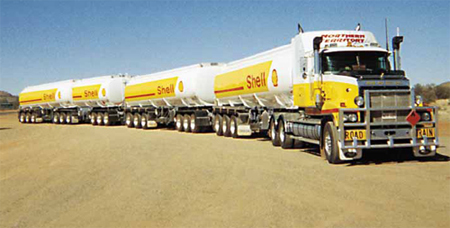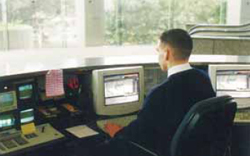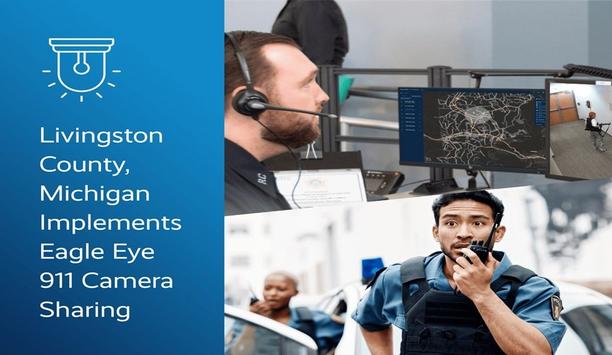
Cardax FT is installed in seven Shell sites in four states across Australia, including the company's head office. Every door is locked and the system requires everyone to use a card to gain access.
Shell needed an extremely high level of security. Cardax FT provides that security.
"Shell Australia required a security system which enhances secure environments and is able to be supported from anywhere in the world," says Tony Van Noordenburg, Shell Australia's Facilities Operations Manager.
Leading the way is a strong theme throughout Shell's first one hundred years in Australia. Ever since its first general manager, Englishman Ernest E. Wagstaff, or Waggy to his friends, made his first visit "Down Under" in 1901, Shell Australia has notched up an impressive series of firsts.
The Shell ship Turbo delivered the first cargo of bulk kerosene to Australia on June 3, 1901; two years later another Shell ship, the Murex, delivered the first shipment of bulk fuel to Australia; in 1916 Shell Australia introduced bulk delivery of fuel to garages equipped with pumps; in 1919 the Shell Aviation Service began; many other milestones followed including the introduction of Shell unleaded petrol (Shell Ultra) in 1986 and the introduction of Shell lead-free petrol (Optimax) in 1999.
Shell Australia then led the way again to become one of the first companies to adopt the groundbreaking Cardax FT integrated access control and security system.
Shell Australia needed an enterprise wide all-inclusive security system that was Y2K compliant. The newly developed Cardax FT system, with its integrated access control, intruder alarms management, intercom, remote imaging and photo identification features, was the system of choice for Shell. It is now installed in seven Shell sites in four states across Australia, including the company's head office.
The Cardax FT system supports 5000 cardholders and 300 doors. Every door is locked and the system requires everyone - whether an employee or visitor - to use a card to gain access. Further expansion is planned across other Shell sites.
The Cardax FT system replaced the security system that was first installed in Shell Australia's 28-storey head office building in 1989. A security review revealed that the non-integrated system was outdated. This, and the need for Y2K compliancy, prompted the change to Cardax FT.
One who is more than happy with the Cardax FT system's performance is Shell Australia's Facilities Operations Manager, Tony Van Noordenburg.
"The system saves hassles and dramas," says Van Noordenburg. "It is very flexible and certainly meets our needs. It allows for ongoing upgrades and it definitely lends itself to other Shell sites."
"The system is software driven and able to be supported from anywhere in the world, enhancing secure environments at remote sites. In our case this is very important, as is the ability to maintain a national system remotely. The reporting function is also very fast and gives good flexibility," explains Van Noordenburg.
His enthusiasm for the Cardax FT system is shared by Shell Australia's Security Supervisor, Allan McColley.
"This system surpasses other security systems on the market," says McColley. "We use it mainly for access control, identification and alarm monitoring. The system is easy to use while offering all the features we need."
Shell needed an extremely high level of security. The Cardax FT system is encrypted using 168 bit Secure Sockets Layer (SSL) technology similar to the standard of encryption used to secure Internet banking transactions.
 The unique Microsoft Windows 2000 based security system is an access control system that is fully integratable with other systems. The system, designed from the outset to use minimal bandwidth, resides on the Local Area Network of each site and is controlled and administered from Melbourne over Shell's own Wide Area Network.
The unique Microsoft Windows 2000 based security system is an access control system that is fully integratable with other systems. The system, designed from the outset to use minimal bandwidth, resides on the Local Area Network of each site and is controlled and administered from Melbourne over Shell's own Wide Area Network.
The network-friendly system includes a Command Centre, controllers, intelligent door terminals with intercom, digital cameras, a range of input and output devices, reader interfaces and door readers.
Upgrades of the system are easily accommodated across the Shell sites as the Cardax FT Controller supports downloadable code from the Command Centre. "One of the best aspects of Cardax FT in terms of management is that we can run maintenance programs and handle system upgrades from head office," Van Noordenburg says.
Controllers support remote dial-up operation, enabling cost-effective monitoring of the remote locations within the system. At Shell, all alarm events are monitored at each site, as well as being monitored at head office. The system is divided in a way that ensures the remote site operators are unable to see overall activity. "The beauty of this system is that we can do anything we want in the way of control and system administration from Melbourne, as well as getting system support from anywhere in the world," says Van Noordenburg.
The Cardax FT Digital Camera, part of the Cardax FT system, enables all Shell sites to be monitored from one location.
It allows for digital imaging of remote sites- for example the system can raise an alarm if it detects motion and then send images back to central control at Shell's head office. The camera, designed with network environments in mind, performs motion detection, activity reporting, image compression and image security.
Compression ensures the overall impact on the Shell network is minimised. Operators can view images live (twice per second) at the workstation or view images stored on the system's server.
For Cardax, the Shell Australia project represents a major step forward - and a job well done. Van Noordenburg says he would certainly recommend the Cardax FT system - and the company behind it.
Becoming a field test partner for Cardax FT was a success story for Shell Australia, an early adopter of technology. The result, after two years of exhaustive testing, is a world leading, powerful access control system - Cardax FT.
















